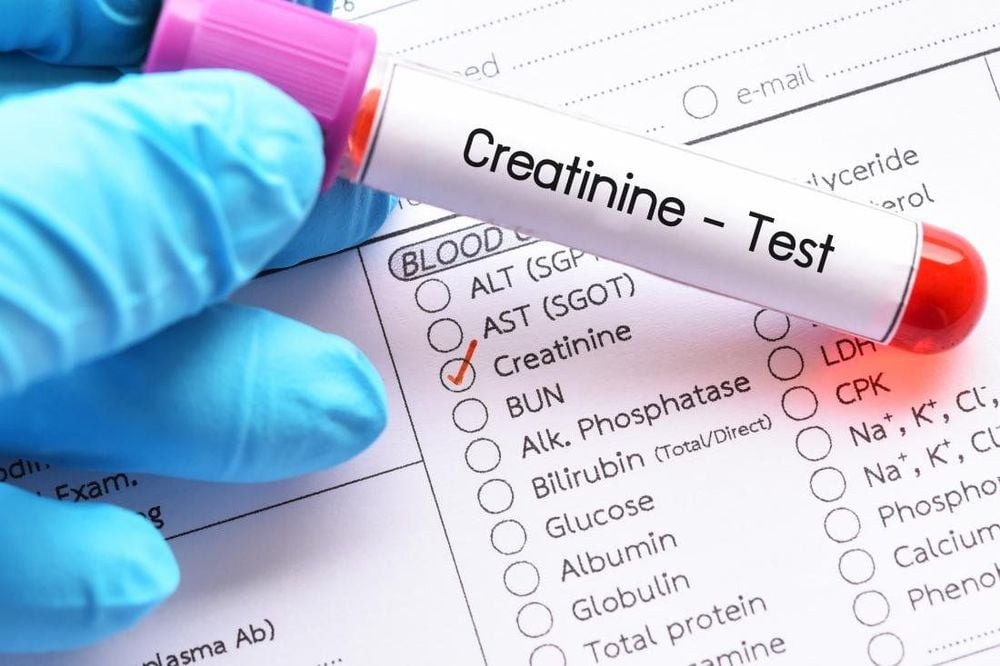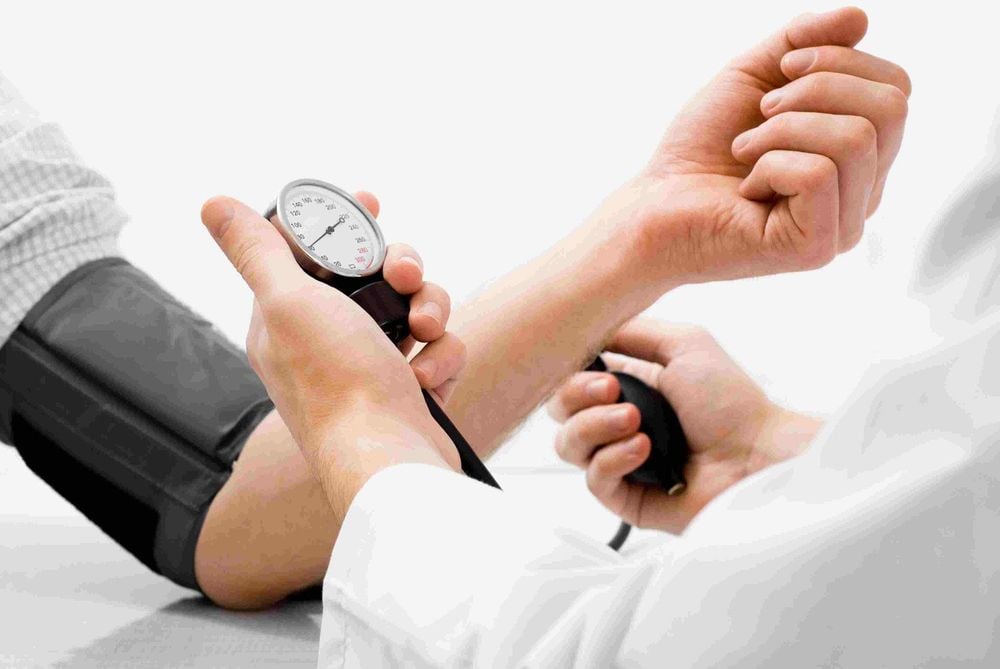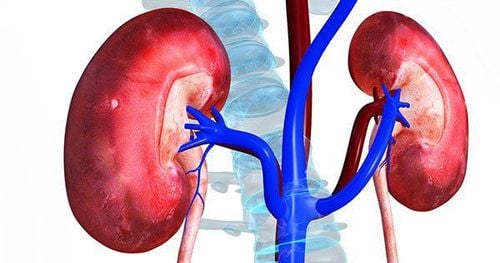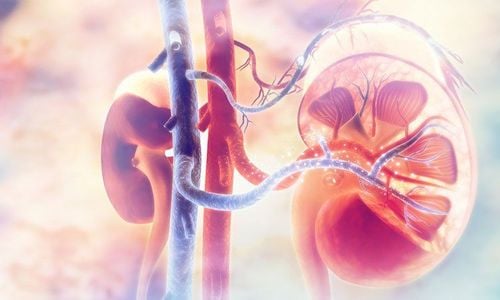This is an automatically translated article.
Kidney complications of diabetes include complications in the glomeruli (also known as glomerulosclerosis), atherosclerosis in the kidneys, and infections in the kidneys and urinary tract. Diagnosing renal failure in patients with diabetes is essential for effective disease treatment as well as for the prevention of complications.1. Methods of diagnosing kidney failure in diabetic patients
In diagnosing kidney failure in diabetics, the two main methods for diagnosing kidney failure are blood tests and urine tests.1.1 Checking for albumin in urine
Normally urine does not contain albumin, the presence of protein in the urine is a sign of kidney damage.
1.2 Blood urea test
Urea is formed when proteins are broken down, so higher than normal blood levels of urea can be a sign of kidney failure.
1.3 Blood creatinine test

Xét nghiệm creatinin là phương pháp chẩn đoán suy thận ở bệnh nhân tiểu đường
1.4 Kidney biopsy
If diabetic nephropathy is suspected but uncertain, the doctor may biopsy the kidney. A kidney biopsy is a surgical procedure in which a small sample of one or both kidneys is taken for observation and evaluation.
With the above methods, the urine albumin test method is still the most commonly used in diagnosing kidney failure in diabetic patients.
In the first stage of diabetes, proteinuria is absent, the patient should be checked every 6 months.
The first amount of microproteinuria measured depends on the method of urine collection, usually in the range of 30-299mg/24h or 30-299 micrograms/mg creatinine. When microproteinuria is found, it must be checked every 3 months and treated specifically.
At a later stage, the disease will change to clinical proteinuria, that is, proteinuria greater than 300mg/24h, at this time diabetic kidney disease has clearly manifested.
When kidney disease in patients with kidney failure has obvious manifestations, the filtering capacity of the kidneys gradually decreases, within 5-10 years, it will turn into end-stage renal failure. .
2. Definitive diagnosis of diabetic nephropathy
Definitive diagnosis is based on cytology, most positive cases are based on the combination of albuminuria, hypertension and decreased glomerular filtration rate.
2.1 Albuminuria
Can be quantified by special immunological techniques such as radioimmunoassay, ELISA... can identify albuminuria.
In normal individuals, urinary excretion of albumin does not exceed 20-30 mg/day or 15-20 μg/min. When there is albumin in the urine from 30mg to 300mg/day (from 20 to 200 μg/min) this is an indication that the patient is suffering from microalbuminuria. When albuminuria is 300 mg/24 hours or more, it is called gross albuminuria.
Urinary albumin excretion is different from time to time in the same individual, so it is necessary to perform albuminuria tests repeatedly to evaluate.
2.1 Blood pressure

Tăng huyết áp là một triệu chứng của bệnh thận do đái tháo đường
Hypertension is a symptom of diabetic nephropathy, with arterial blood pressure depending on the stage of the renal complication. When microalbuminuria is present, systolic blood pressure at night is slightly reduced, this phenomenon disappears in the presence of macroalbuminuria.
2.2 Glomerular filtration rate
Decreased glomerular filtration rate is a symptom to diagnose renal failure as well as a complication of end-stage diabetes, as assessed by creatinine clearance.
In addition to the above three signs, assessment of glomerular damage in diabetic nephropathy is also based on: Duration of diabetes, manifestations of microvascular disease.
3. Differential diagnosis of kidney failure in diabetic patients
In patients with insulin-dependent diabetes mellitus in practice, renal biopsy is not required to confirm the diagnosis if the duration of diabetes is more than 10 years and diabetic retinopathy is present.Conversely, renal biopsy is necessary if these two factors are not met or the patient's clinical presentation points to another etiology.
Comparison of two factors albuminuria and blood pressure often allows the distinction between diabetic and hypertensive patients with renal complications.
Diagnosing kidney failure in diabetics has a very important role in the management and treatment of diabetic kidney failure. The earlier the disease is detected, the easier it is to treat and the less complications it will have.
Currently, Vinmec Times City International General Hospital has applied the technique of early kidney failure screening for diabetics by urine test L-FABP according to Japanese technology on modern automatic AU680 testing machine. , for quick and accurate results.
Patients with kidney disease in general and needing early diagnosis of kidney failure due to diabetes in general with early kidney failure screening techniques by urine test will be screened early and diagnosed accurately, helping to more effective treatment and prevention. Vinmec Times City is the first hospital to apply this new method in Vietnam
Please dial HOTLINE for more information or register for an appointment HERE. Download MyVinmec app to make appointments faster and to manage your bookings easily.













